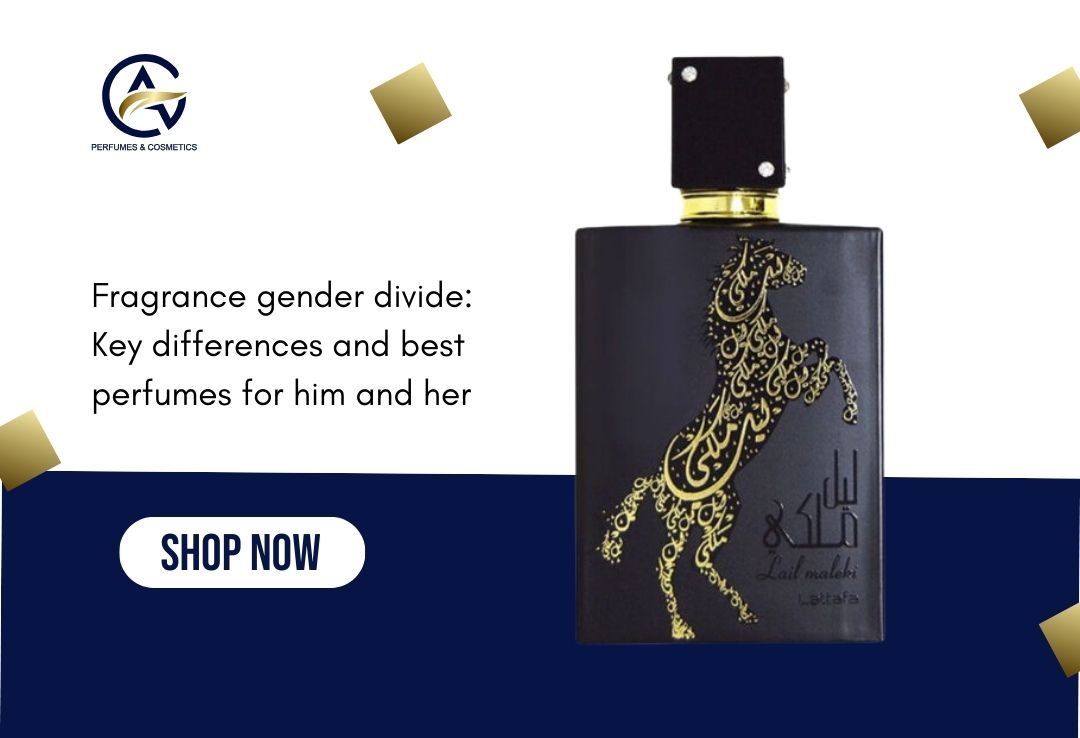Fragrances are distinguished by their scent profiles, marketing and cultural expectations. While men’s fragrances reflect woody, spicy, earthy and leathery notes, female fragrances have floral, fruity, and sweet notes, having a softer, more delicate allure. This line between masculine and feminine is blurred and overshadowed by the unisex perfume choices offering gender-neutral blends. The modern perfumes embrace the unisex or gender-neuter blends. When you look for the best fragrance perfume for women, personal preference plays a big role in fragrance choice. Among the best fragrances, men gravitate towards timeless classics, while females choose the ones that resonate with their identity.
Fragrance is more than just a pleasant aroma. Reflecting a personal expression or acting as a memory trigger and a silent communicator, men’s and women’s fragrances have some of the best scents. The distinctions are rooted in chemistry, marketing and cultural perceptions and can go a long way in deciding the perfume one wants to wear and feel throughout the day. Let us explore in detail the reasons for differences in men’s and women’s fragrances and how to go about choosing the best fragrances for women and men in day-to-day life:
1. Scent profiles and ingredients: One of the most noticeable factors that differentiate men’s and women’s fragrances is the scent profile and ingredients. Traditionally, women’s scents and fragrances tend to lean towards floral, fruity and sweet flavours, while men prefer woody, spicy and fresh herbal fragrances, giving a different perspective. The ingredients are not exclusive to each other or any one gender. However, the concentration and combination vary. This gives them a preference with males or females. The flowery ones may include lily, jasmine, rose or peony, fruity ones are relatable to apple, berries, citrus or peach, and the sweet ones may be scents of vanilla, caramel and tonka bean. In the case of men, preferred scents of wood, cedar, sandalwood and oud are relatable, but for spicy ones, pepper, clove and cinnamon are the scents in men’s perfumes.
2. Bottle design and marketing: To add to the differentiation, women’s perfumes come in bottles designed in a curvy, sleek shape with warm tones and floral motifs may dominate. However, in the case of men, the colognes tend to favour bold, geometric bottles with dark matte colours having minimalistic designs. This is done to reflect gender-specific choices in perfumes and make it easy to choose them while buying. Men are thus projected as strong and rugged, while females are shown to be fragile and soft.
3. Cultural and psychological perceptions: Much of the distinction between male and female fragrances is psychological and cultural. From an early age, we associate floral and sweet smells with femininity and musty or earthy scents with men who ooze masculinity. Thus, females are projected with floral and sweeter smells and men with more woody smells. These associations are reinforced by the media in the advertisements and other modes, along with traditions and retail categorization. However, modern brands are challenging these norms by projecting a sense of unisex and gender-neutral offerings.
4. Concentration and longevity: the concentration of both men’s and women’s perfumes may seem similar, but the fragrances for men are slightly less sweet and are formulated to be lighter. This makes them more invigorating, especially in sports and fresh variants. Female perfumes and fragrances are stronger and leave more scent trails due to the inclusion of flower bases. This makes it heavier and more noticeable. The perfumes for women, thus, last longer and stay better.
5. Advertising: Men’s perfumes tend to reinforce gender roles, and women’s fragrances project females as being more delicate and fragile in nature. This is due to the fragrance and the base that reflects softness and style. Men are projected to be rugged and strong, which reflects their masculine nature.
6. Marketing language: The language used in advertising also differs significantly. Men’s fragrances are marketed with terms like intense and strong, adventurous or powerful, and for women’s perfumes, words like enchanting, elegant and graceful or seductive are used to give a feminine touch. The messaging plays an integral role in stereotyping gender roles and emotional appeal to the customers.
7. Ingredient composition: With both men’s and women’s perfumes using similar ingredients, the ratios and combinations differ. Men’s colognes often include aromatic compounds, while female perfumes lean heavily on floral and sweet notes. This differentiates the composition, and the difference in ratios makes a huge difference in the scent and its longevity. Men’s perfumes tend to be lighter and erode easily, while female perfumes last longer and stronger.
8. Price and product size: Most manufacturers price the female products in the fragrance and perfumes class higher than those for me. This is due to the choice and perceived luxury around a brand that is enhanced by elaborate packaging. Men’s perfumes are larger in size and reflect a huge difference in applicability. The pricing and packaging of the perfumes are evident as major differences that make them gender-specific in most cases.
9. Targeted mood and identity: One of the major differences in men’s and women’s perfumes is the perceived mood and identity that is reflected in applying a particular scent. Men’s fragrances often aim to convey confidence and ruggedness and reflect professionalism and workplace popularity, while female fragrances are focused on femininity, sensuality and allure to attract the opposite gender. They are designed both for daytime wear and night time application. Men’s perfumes are often limited to morning or evening timings.
10. Cultural influences and expectations: In several cultures, there is an ingrained expectation of how females and men are expected to smell. This is gender-specific and known to all. While men are expected to smell fresh and strong, clean and energetic, females are expected to smell sweet, soft and floral. These cultural norms guide the industry in creating gender-specific products that cater to the needs of that particular norm.
Fragrances are crafted with attention to detail and often reflect the preferences of men and women based on their cultural, professional or personal expectations and preferences. While the best fragrances for men are expected to enhance their personality, the female perfumes focus on projecting her as delicate and graceful with a sense of style and aura. Choosing a perfume may thus be a matter of distinction and choices based on certain factors. Nonetheless, they help a person to express his or her individuality and enhance their personal expression.







